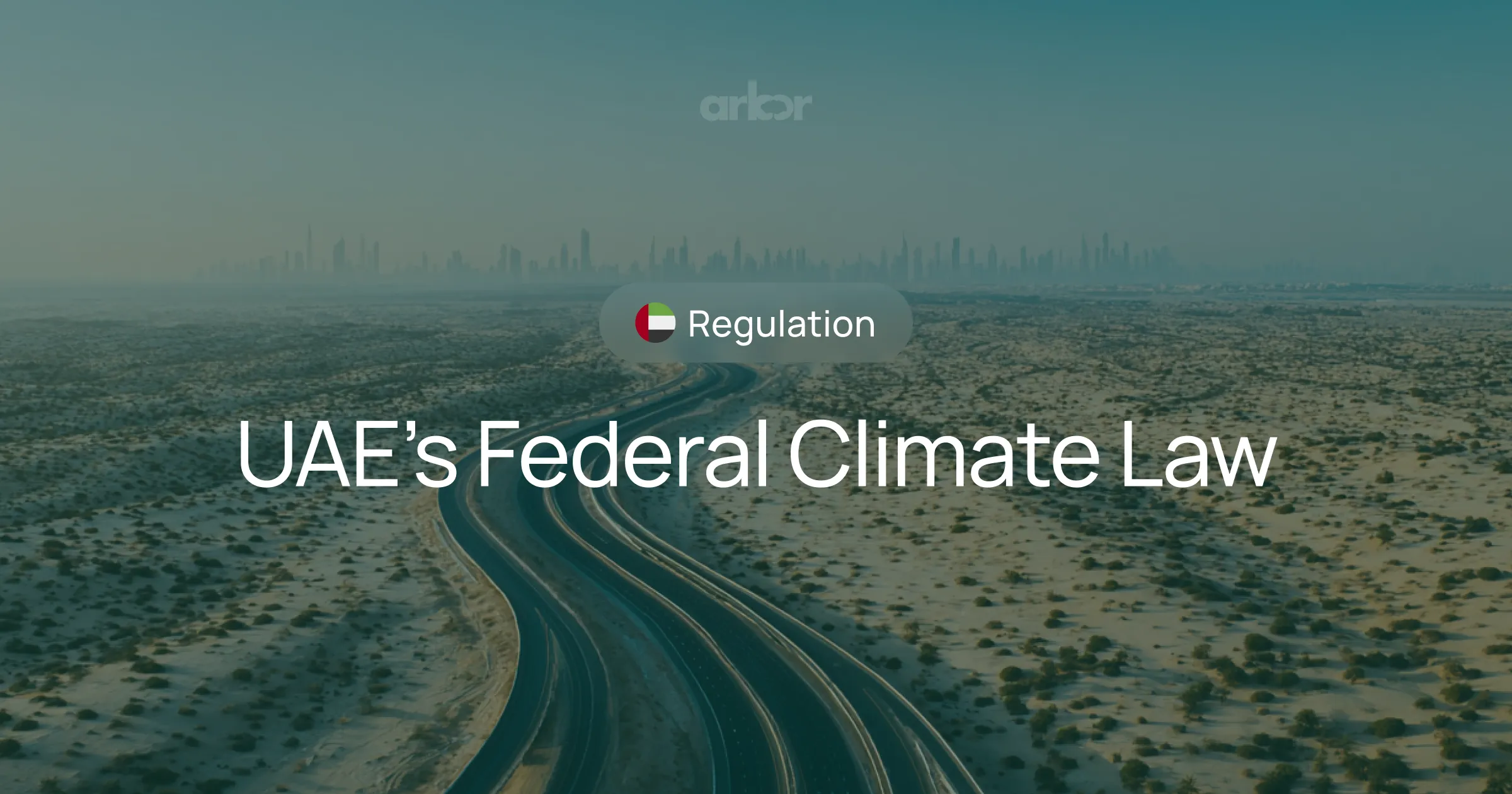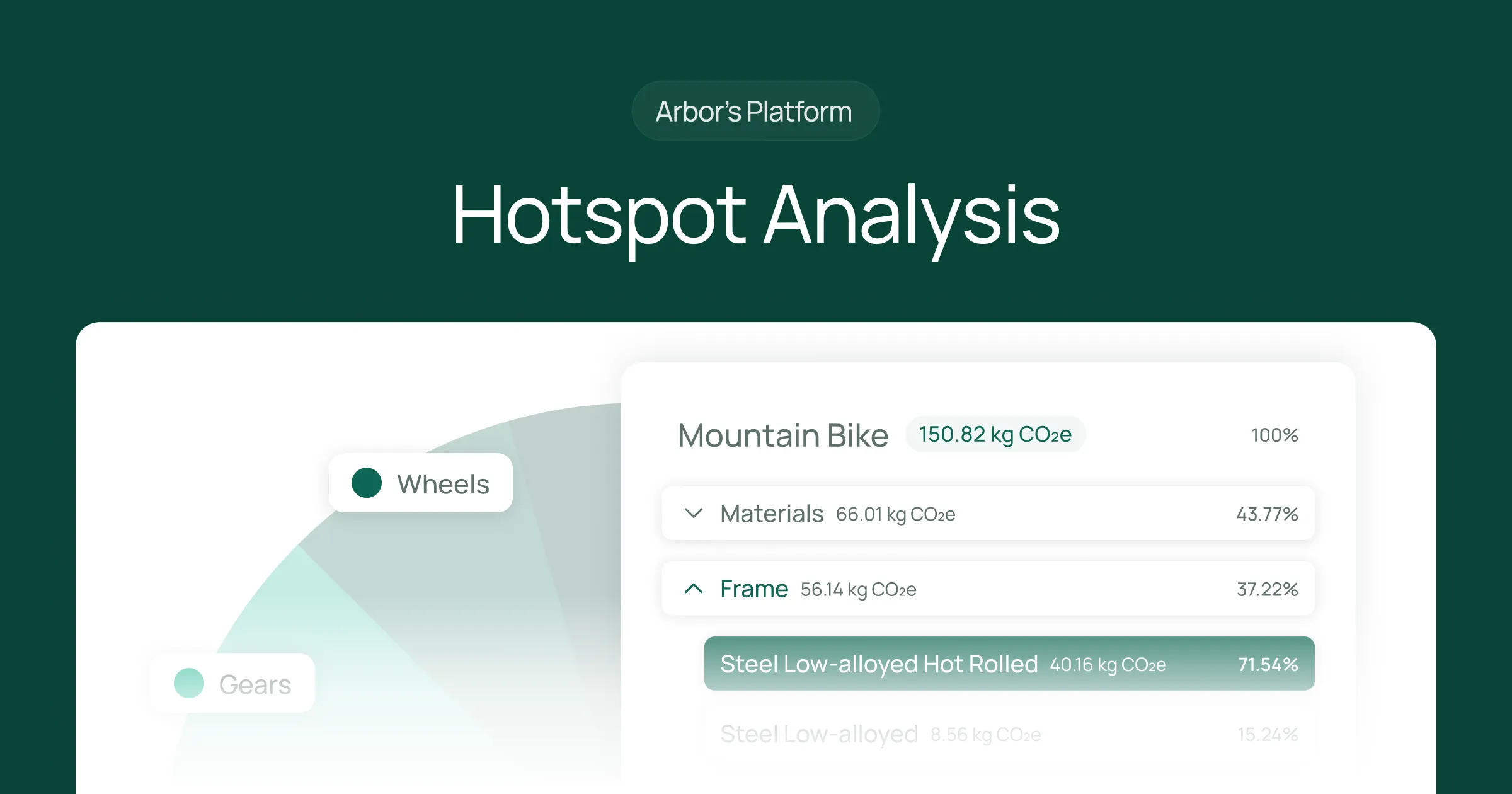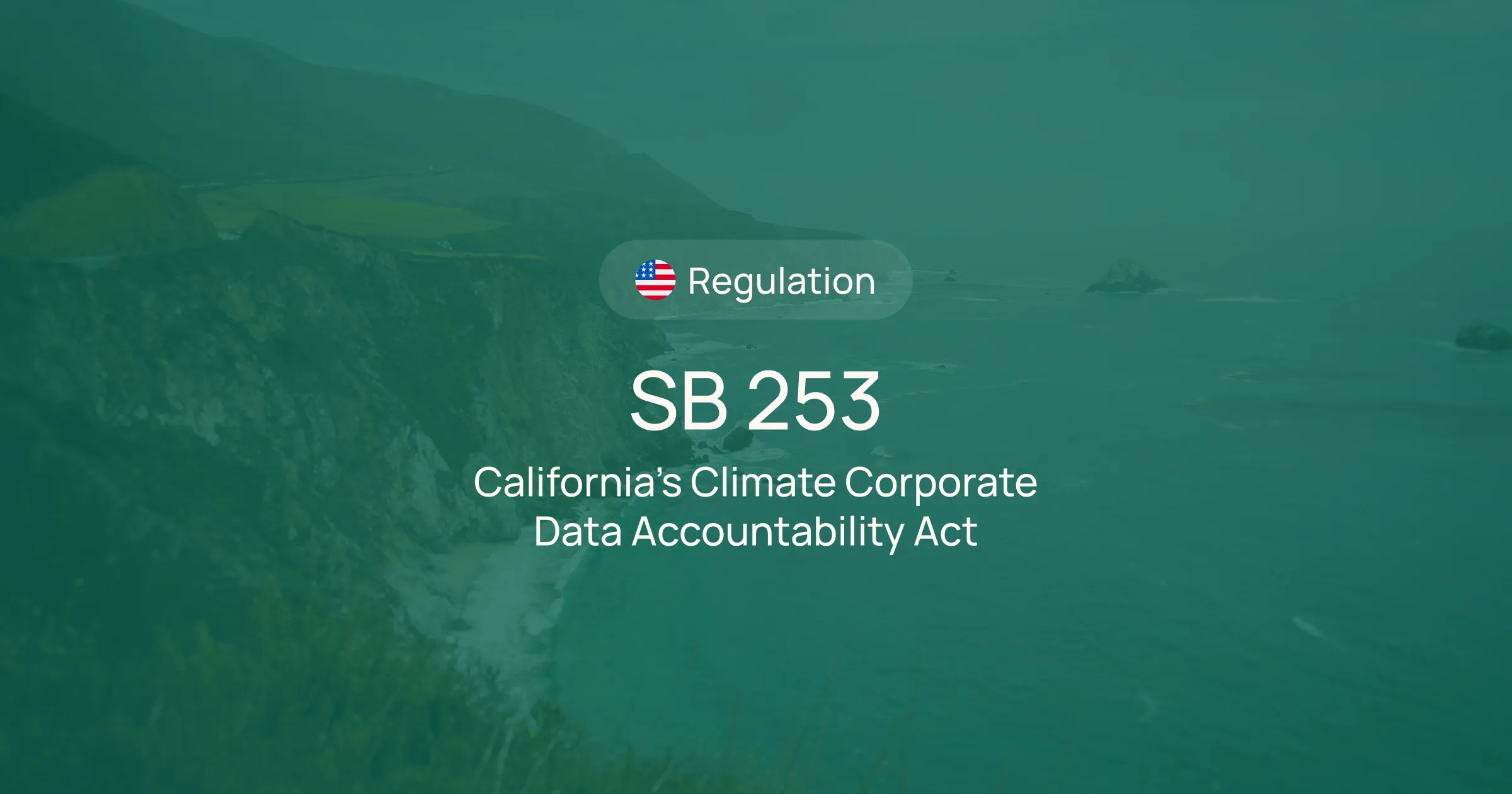Demystifying Canada’s OSFI Climate Risk Management Guideline B-15
Climate change is no longer a distant threat but instead an immediate challenge. The financial sector stands on the frontline, navigating the risks and opportunities this global phenomenon brings. Recognizing this evolving landscape, the Office of the Superintendent of Financial Institutions (OSFI) in Canada has introduced Guideline B-15, a pivotal regulatory framework designed to fortify the resilience and sustainability of Federally Regulated Financial Institutions (FRFIs) against climate-related risks.
What is Guideline B-15?
Guideline B-15 is predicated on the understanding that FRFIs' safety and soundness are increasingly susceptible to the adverse effects of climate change. This encompasses physical risks, characterized by the growing severity and frequency of climate-related extremes, and transition risks, which pertain to the economic adjustments requisite for transitioning toward a low greenhouse gas (GHG) emissions economy. (Types of risks will be covered in detail below.)
Such risks threaten the operational continuity and profitability of financial institutions and the stability of the broader economy. In light of this, OSFI's Guideline B-15 seeks to embed climate risk management into the core strategic and operational framework of FRFIs.
The guidelines are based on the IFRS S2 Sustainability Standards.
Guideline B-15 is built around three pivotal outcomes:
Understanding of Business Model & Strategic Risks
FRFIs are expected to thoroughly grasp the potential impacts of climate-related risks to their business model and strategy. This involves acknowledging these risks and actively developing strategies to mitigate their potential impacts.
Governance and Risk Management Practices
The guideline mandates that FRFIs install appropriate governance and risk management frameworks tailored to their specific context. This includes ensuring clear accountability for managing climate-related risks and that these risks are integrated into the institution's overall risk management processes.
Financial and Operational Resilience
FRFIs must maintain their financial security in the face of severe climate risk scenarios and their operational resilience amidst disruptions caused by climate-related disasters. This underscores the need for FRFIs to prepare for current climate-related challenges and potentially more severe risks in the future.
What are the key governance and risk management expectations of Guideline B-15?
Governance
At its core, Guideline B-15 necessitates that FRFIs establish comprehensive governance and accountability structures specifically addressing climate-related risks. This directive underscores the expectation for institutions to:
- Implement governance structures, ensuring climate-related risks are seamlessly integrated into their operational and strategic frameworks.
- Incorporate the implications of physical risks stemming from climate change and the transition risks associated with moving towards a low-greenhouse gas (GHG) economy into their business models and strategies, underpinning the strategic thrust of their initiatives.
The essence of governance under B-15 is about establishing oversight and embedding a culture where climate risk considerations are deeply woven into the fabric of financial institutions’ decision-making processes.
Risk Management
B-15 puts forth a proactive risk management protocol in navigating the intricate maze of climate-related risks. It mandates that FRFIs:
- Manage and mitigate climate-related risks synchronizing with their Risk Appetite Framework, pivotal for aligning risk-taking activities with strategic objectives.
- Conduct a comprehensive evaluation of potential climate-related risks to their business strategy and operational model, thus fostering a culture of risk management and strategic foresight.
This guideline aspect propels FRFIs to identify risks and actively mitigate them through well-structured risk management practices.
Climate Scenario Analysis and Stress Testing
Perhaps the most forward-thinking feature of B-15 is its emphasis on climate scenario analysis and stress testing. This involves:
- Utilizing climate scenario analysis to assess the impact of climate-related risks on the FRFI's risk profile, business strategy, and business model.
- Simulating various climate risk scenarios to forecast potential impacts enables FRFIs to develop adaptive strategies that anticipate future states and fortify risk management practices amid a fluid climate landscape.
This proactive stance allows institutions to forecast and prepare for potential future scenarios, align their strategic planning and operations with the realities of a changing climate, and ensure sustainability and stability are at the forefront of their agendas.
Capital and Liquidity Adequacy
In a future iteration, B-15 may expand to include capital and liquidity adequacy considerations, with FRFIs expected to:
- Incorporate climate-related risks into their Internal Capital Adequacy Assessment Process (ICAAP) or Own Risk and Solvency Assessment (ORSA).
- Factor the impact of climate-related drivers on liquidity risk profiles and consider severe yet plausible climate-related stress events in liquidity buffer assessments.
Who needs to comply with Guideline B-15?
B-15’s reach extends across a wide spectrum of financial institutions, underscoring the importance of a unified approach to managing the risks associated with climate change. Understanding who falls under this guideline's purview is crucial for ensuring compliance and fostering a secure financial ecosystem.
All Federally Regulated insurers
The insurance sector, particularly Internationally Active Insurance Groups (IAIGs), is at the frontline of confronting climate-related risks. IAIGs include:
- Canada Life Assurance Company
- Intact Financial Corporation
- Manufacturers Life Insurance Company
- Sun Life Assurance Company of Canada
Beyond IAIGs, all other federally regulated insurers, encompassing life, property & casualty (P&C), and foreign insurers operating within Canada, must adhere to B-15. This broad inclusion ensures that the insurance sector, in its entirety, is fortified against climate-related uncertainties, protecting both the institutions and their clientele.
Deposit-taking institutions (DTIs)
DTIs form a critical component of Canada's financial landscape, directly impacted by B-15 mandates. These institutions, ranging from major banks to smaller entities, are instrumental in managing the economic impacts of climate change. Their role in providing loans, mortgages, and other financial products makes them pivotal in transitioning to a more sustainable, low-carbon economy.
Domestic Systemically Important Banks (D-SIBs)
Identified for their substantial intertwining with the national economy, D-SIBs are under scrutiny to comply with B-15 guidelines. These banks include:
- Bank of Montreal
- Bank of Nova Scotia
- Canadian Imperial Bank of Commerce
- National Bank of Canada
- Royal Bank of Canada
- Toronto-Dominion Bank
Their significant market presence and extensive operational network make their adherence to climate risk management practices not just a regulatory requirement but a critical factor in ensuring economic and environmental stability.
Small and Medium-Sized Deposit-Taking Institutions (SMSBs)
SMSBs, while smaller in scale compared to D-SIBs, play a vital role in Canada's financial sector. Their compliance with Guideline B-15 is essential in creating a cohesive and comprehensive framework for climate risk management across the banking sector, ensuring no entity is left vulnerable to unforeseen climate impacts.
What are the requirements & mandatory deadlines of B-15?
Guideline B-15 spans four primary categories: governance, strategy, risk management, and metrics and targets. Each has specific disclosure requirements to enhance transparency and accountability.

OSFI expects the FRFIs to implement the above expectations of this Guideline effective the fiscal periods ending on or after October 1, 2024, 2025, and 2026, as applicable. The timeline for implementation will be decided at a later date for the Climate Transition Plan, scenario analysis, and industry metrics.
Governance
- Governance Bodies Overview: FRFIs need to describe the structure and roles of governance bodies overseeing climate-related risks and opportunities.
- Management's Role: Detail the responsibilities of management in monitoring, managing, and overseeing climate risks and opportunities.
D-SIBs and IAIGs must describe their governance structures for their company’s Fiscal Year 2024 onwards, with SMSBs and All Other Federally Regulated Insurers reporting for their company’s Fiscal Year 2025 onwards.
Strategy
- Risk & Opportunity Analysis: Outline potential climate risks and opportunities and their anticipated impact on financial performance and strategic planning.
- Business Model Impact: Explain climate risks' current and future effects on the business model and value chain, underscoring the need for strategic adaptability.
- Model Changes: Disclose present and expected changes in the business model, including direct and indirect mitigation and adaptation efforts related to their climate transition plan.
- Financial Implications: Provide a narrative on how climate risks and opportunities have historically and may prospectively influence financial stability and performance.
- Scenario Analysis
- Utilizing climate scenario analysis to assess the impact of climate-related risks on the FRFI's risk profile, business strategy, and business model and
- Simulating various climate risk scenarios to forecast potential impacts enables FRFIs to develop adaptive strategies that anticipate future states and fortify risk management practices amid a fluid climate landscape.
D-SIBs and IAIGs must disclose their climate-related risks and strategic impacts by 2024, whereas SMSBs and other insurers have until 2025 to comply.
To enable OSFI to assess aggregate exposures to physical and transition risks and compare FRFI approaches to climate scenario analysis, OSFI is preparing a Standardized Climate Scenario Exercise that is expected to be implemented by the end of 2024.
Risk Management
- Risk Identification Process: Describe the processes for identifying and assessing climate-related risks and how these are integrated into the overall risk strategy.
- Risk Management: Share the methods for managing climate-related risks.
- Integration in Risk Management: Discuss how climate risk and opportunity processes are incorporated into the institution's overarching risk management framework.
Climate risks are categorized into the following:
- “Physical risks” are the financial risks from the increasing severity and frequency of climate-related extremes and events (i.e., acute physical risks); longer-term gradual shifts of the climate (i.e., chronic physical risks); and indirect effects of climate change such as public health implications (e.g., morbidity and mortality impacts); and
- “Transition risks” are the financial risks related to the adjustment process towards a low-greenhouse gas (GHG) economy. These risks can emerge from current or future government policies, legislation, and regulations to limit GHG emissions, technological advancements, and changes in market and customer sentiment towards a low-GHG economy.
Physical and transition risks can also lead to liability risks, such as climate-related claims under liability policies and litigation and direct actions against financial institutions for failing to manage their climate-related risks.
The timeline mandates that D-SIBs and IAIGs integrate and disclose their risk management processes from Fiscal Year 2024 onwards. SMSBs and other insurers are given until Fiscal Year 2025 to meet the same standards.
Metrics and Targets
- Risk Assessment Metrics: Disclose metrics used by the FRFI to assess climate-related risks and opportunities
- Scope 1 & 2 Emissions: Disclose the metrics, methodology and reporting standards for the FRFI's Scope 1 and Scope 2 GHG emissions
- Scope 3 Emissions: Provide detailed information on the absolute emissions and methodologies used to calculate Scope 3 GHG emissions across the entire value chain, including specific categories like investments.
- Strategic Goals: Outline quantitative and qualitative climate-related targets to monitor progress towards strategic objectives.
- Cross-Industry Metrics: Disclose metrics covering climate-related transition risks, physical risks, opportunities, and capital deployment.
- Industry-Specific Metrics: Share metrics specific to the industry that address climate-related risks and sustainability efforts.
D-SIBs and IAIGs have a set compliance deadline for the company’s fiscal year 2024 for metrics and disclosures related to assessing climate-related risks. SMSBs and all other insurers are expected to adhere to reporting for the company’s Fiscal Year 2025. Disclosure for Scope 3 GHG emissions is required by the company’s Fiscal Year 2025 for D-SIBs and IAIGs and the company’s Fiscal Year 2026 for SMSBs and other insurers.
Why should you care about Guideline B-15?
Urgency for Climate Resilience
Guideline B-15 is more than a regulatory requirement; it's an urgent call to action for FRFIs to ensure security against the real and growing threats of climate change. Embedding climate risk management into their operations and strategy prepares FRFIs to withstand and thrive amid evolving climate-related challenges, securing their future viability and resilience.
Unlocking Strategic Opportunities
Adopting B-15 enables FRFIs to seize strategic opportunities for innovation and competitive advantage. It aligns institutions with the increasing demand for green financial solutions, attracting eco-conscious investors and partners. This compliance is not just about risk management—it's about positioning for growth and leadership in the green economy.
Leading the Green Economy Transition
B-15 places Canadian FRFIs at the vanguard of the global shift towards sustainable finance. Their commitment to climate risk integration elevates Canada’s standing in international sustainable finance circles, contributing significantly to global efforts against climate change and paving the way for a sustainable economic future.
See 7 more benefits of carbon management and why it’s important in every company's strategy.
Summary
Guideline B-15 is a significant step toward enhancing climate security in Canada's financial sector. It emphasizes the need for Federally Regulated Financial Institutions (FRFIs) to adopt rigorous climate risk management within their operations and strategies. Focusing on surviving physical and transition risks due to climate change, B-15 outlines clear governance, risk management, and stability steps for FRFIs. It advocates for active risk management, including scenario analysis and stress testing, setting a compliance timeline from the company’s Fiscal Year 2024 to the Fiscal year 2026.
This guideline protects FRFIs from climate-related financial risks while fostering strategic growth and leadership in sustainable finance. It encourages companies to shift towards a greener economy, ensuring sustainability and long-term resilience.
Arbor, a leading carbon management platform that assists companies in precisely measuring their carbon footprint, has partnered with Dillon Consulting Limited (Dillon), recognized for its expertise in environmental science, management, planning, and engineering. This partnership empowers Dillon's national team to harness Arbor's sophisticated tools for a deeper understanding of their environmental impact and to develop informed, data-backed carbon management strategies. It signifies a shared commitment to environmental sustainability between the two entities, with Arbor's cutting-edge solutions being complemented by Dillon's extensive infrastructure and services. Together, Arbor and Dillon are simplifying sustainability and encouraging businesses to make decisions that are not only responsible but also beneficial for our planet.
Are you looking to adapt your business to Guideline B-15? Speak with our carbon experts for custom strategies to achieve compliance and enhance your sustainability efforts.
Measure your carbon emissions with Arbor
Simple, easy carbon accounting.



.avif)
%20Directive.webp)


.webp)











%20Arbor.avif)





%20Arbor.avif)


.avif)






%20Arbor%20Canada.avif)

.avif)
%20Arbor.avif)
.avif)






_.avif)
.avif)
%20Arbor.avif)




%20Software%20and%20Tools.avif)





.avif)
.avif)




%20EU%20Regulation.avif)














%20Arbor.avif)









_%20_%20Carbon%20101.avif)







.avif)

.avif)
.avif)










